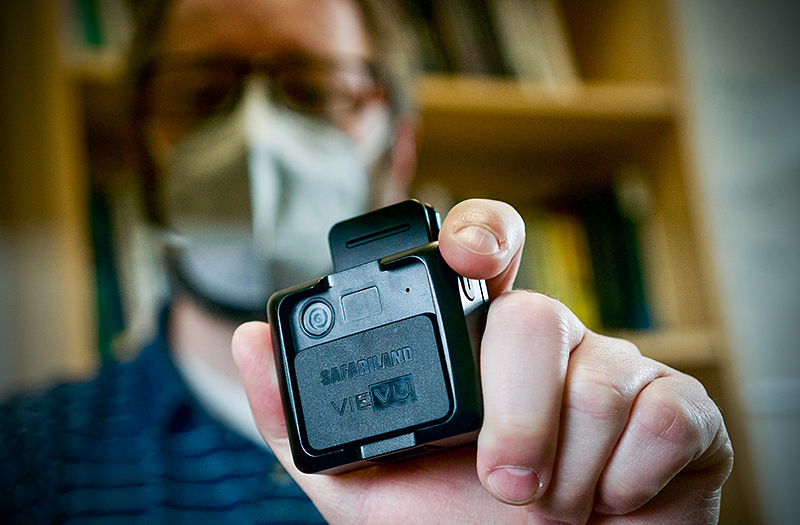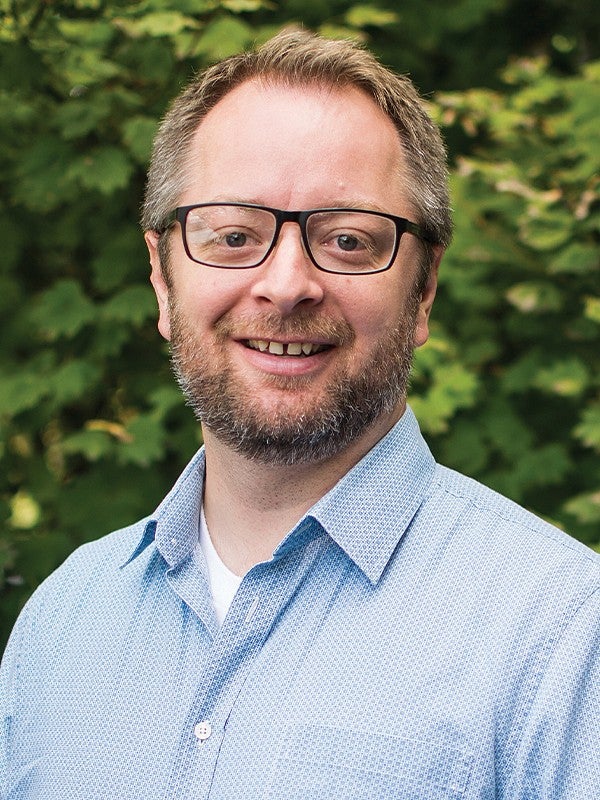
Often seen as a tool to hold police officers accountable, police-worn body cameras have come under attack for failing to consistently achieve this goal and for creating privacy complications.
Bryce Newell, an assistant professor of media studies in the School of Journalism and Communication, addresses the controversies surrounding body-worn cameras in his research and his new book, “Police Visibility: Privacy, Surveillance, and the False Promise of Body-Worn Cameras.”

“One of the things I was looking at and thinking about was what police-worn body cameras mean for the people who interact with the officers,” Newell said. “The communities that are policed more heavily are going to be the ones whose images and audio are captured much more frequently than other communities.”
As a result, Newell said, individuals in overpoliced communities can be targeted at a much higher frequency by law enforcement for minor infractions, resulting in distrust of police by those same communities.
As he was working on his doctorate degree in information science at the University of Washington, Newell become interested in issues surrounding privacy and surveillance, particularly police surveillance. He began working with police departments in Washington State that were piloting police-worn body cameras.
He found that, although police-worn body cameras have held some police officers accountable, bystander-recorded video has had more of an impact on holding police officers liable for their actions. This phenomenon has caused uncertainty for police agencies because citizens can release their own footage anywhere, including on social media sites, where it can be shared widely.
“With body-camera footage, police officers feel they can control the narrative a bit more,” Newell said. “They can angle their body and point it where they want. They can start and stop the recording when they want. In my work, I argue what police officers really fear is a lack of control in what is being recorded and how it’s communicated to the public more broadly. They could potentially be placed in a bad light for doing something they wouldn’t want the community to see.”
When police respond to sensitive situations like domestic violence calls, Newell said privacy issues arise when their footage reveals where people live and shows them at their most vulnerable. If a state has broad public disclosure laws governing the release of police body-camera footage, anyone can submit a public records request to view it, and police may not be able to redact information people shared with officers on camera. Some states, such as North Carolina, have passed laws requiring a court order to access police-worn body-camera footage.
Throughout his research on this topic, Newell has found police-worn body cameras do not always achieve the publicly stated goals of these programs.
“Police agencies around the United States were pushing the idea that if we put cameras on officers, then their work is going to be more visible,” Newell said. “What I’ve seen from the perspectives of officers in Washington and other states is that the cameras are more likely to be useful to them in terms of capturing evidence, prosecuting people for various things and facilitating guilty pleas.”
As technology becomes more advanced and police departments develop additional surveillance tools to capture footage on the job, Newell warns that we will still need to find other ways to hold the police accountable.
“We can’t forget the way the technology is situated within the social context, as it makes others more visible — even more visible than the officers themselves,” he said. “We ought to make sure our state laws are set up in a way that allows and restricts access to some of that information. We ought to maintain robust rights for bystander video to occur, for citizens to record the police.”
—By Alli Weseman, class of ’22, School of Journalism and Communication
Alli Weseman (she/her/hers) is a second-year student in the SOJC’s Multimedia Journalism Master’s program in Portland. She has freelanced for Portland Monthly Magazine and hopes to work in a newsroom one day.
